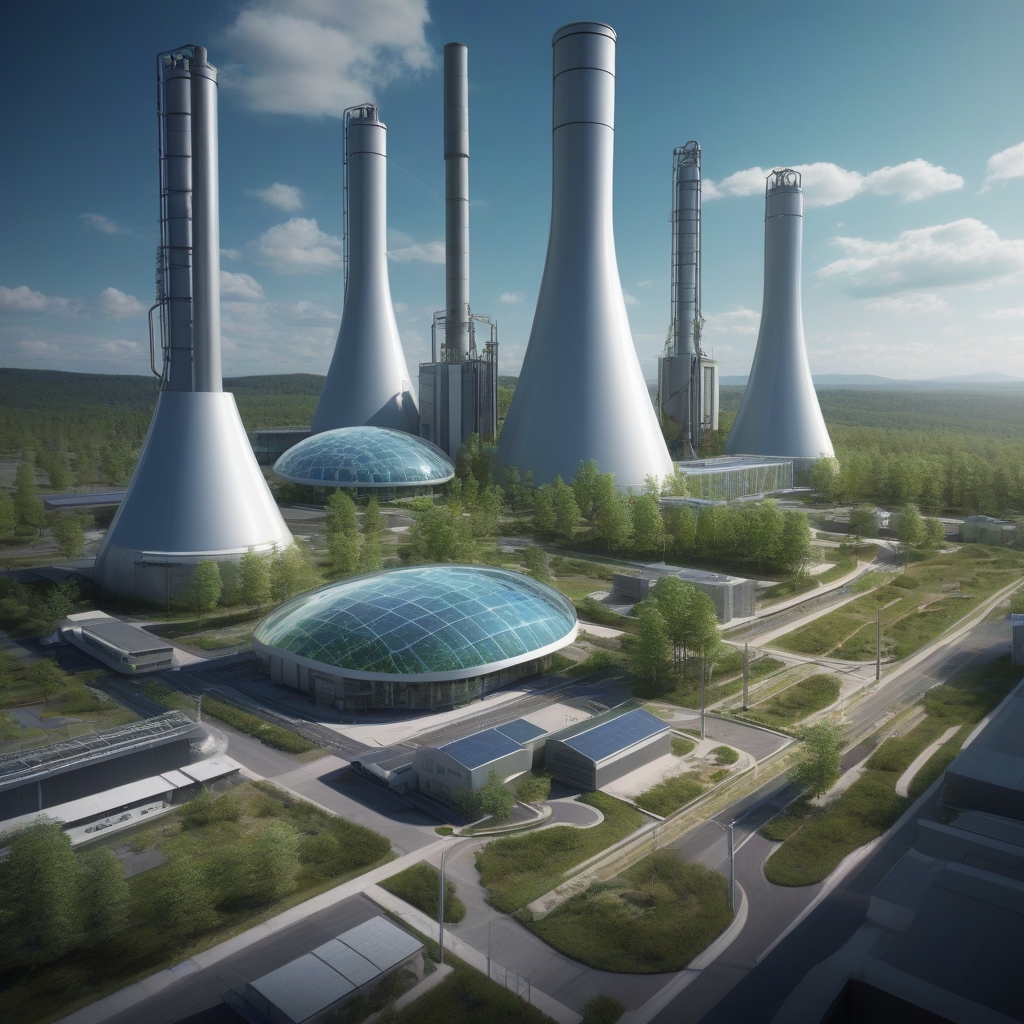**Tech Giants Leverage Small Modular Reactors**
The intersection between technology and energy is seeing unparalleled innovation as tech companies begin to explore small modular reactors (SMRs) for powering their data centers, AI research facilities, and expansive operations. These partnerships underscore a burgeoning synergy between the technology sector and the energy industry—an alliance that’s not just aspirational but crucial in meeting the growing demand for sustainable and powerful energy solutions.
The Rising Need For Sustainable Energy
Artificial Intelligence (AI) and machine learning are at the forefront of today’s technological transformations, but their demands on electrical power are staggering. These sophisticated technologies require copious amounts of energy. As tech giants aim for sustainability and reduced carbon footprints, traditional energy sources are simply not cutting it anymore. Enter **small modular reactors,** a revolutionary approach to nuclear energy that offers promising solutions to these challenges.
SMRs: The Energy Solution of the Future?
The potential of SMRs lies in their design; these reactors are smaller and typically more cost-efficient than traditional nuclear power plants. Here’s why they are becoming a favorite in the tech industry:
–
–
–
–
The confluence of these benefits makes SMRs particularly attractive for powering data-driven enterprises that require consistent, eco-friendly energy sources.
Partnerships Driving Innovation
**Tech companies** like Google, Amazon, and Microsoft have taken concrete steps towards integrating nuclear technology with their operations. These firms recognize that the future of AI and large-scale data processing is heavily reliant on reliable energy resources. This realization has spurred collaborations between tech firms and nuclear energy companies, creating a fertile ground for innovation and sustainable energy solutions.
Leveraging AI with Nuclear Power
AI is not just a consumer of energy in these partnerships—it is also a powerful tool for maximizing the efficiency and safety of SMRs. Here’s how AI is integrated into SMR technology:
–
–
–
The interplay between AI and SMR technology highlights a blueprint for future industrial operations where energy independence and sustainable development go hand-in-hand.
The Economic and Environmental Impact
Investing in SMRs has wide-reaching implications for both the economy and the environment. These reactors have the potential to not only supply sustainable energy but also to drive economic growth by creating new jobs and industries focused on advanced nuclear technology.
Economic Benefits
–
–
–
Environmental Impact
The environmental benefits of SMRs are significant, presenting a compelling case for their broader adoption:
–
–
Challenges and Considerations
Despite the promise of SMRs, challenges remain that could impact their widespread adoption and deployment.
Regulatory Hurdles
The nuclear industry is heavily regulated, and the introduction of new technologies like SMRs requires navigating complex approval processes that can delay implementation.
Public Perception
The legacy of nuclear accidents casts a long shadow, and public apprehension about the safety of nuclear power continues to be a significant hurdle. Educating stakeholders about the safety advancements inherent in SMR design is crucial.
Cost Concerns
While the operational costs of SMRs may be lower, initial capital investment is high. Convincing stakeholders to invest in SMRs necessitates demonstrating clear long-term benefits and potential returns.
Conclusion
The collaboration between tech companies and nuclear energy firms marks a pivotal shift towards sustainable energy solutions tailored to the demands of the digital age. **Small modular reactors** present an enticing opportunity—one that could redefine how the world’s most innovative companies power their operations and reduce their environmental footprints. As these technologies continue to evolve, the partnership between the tech and nuclear industries will be instrumental in shaping a future where advanced technology and sustainable energy are not just compatible but also symbiotic.

Leave a Reply